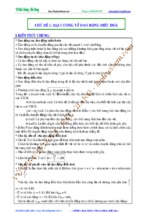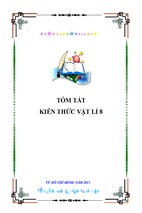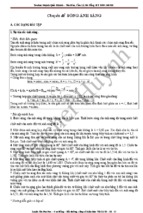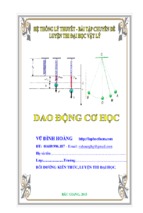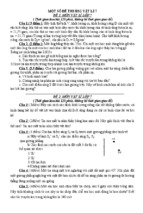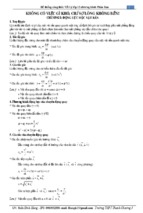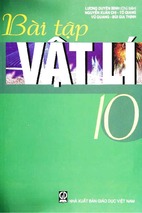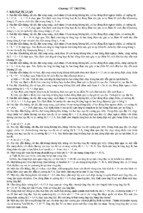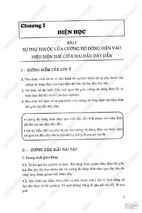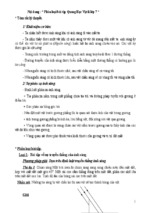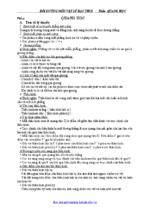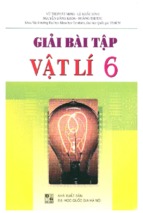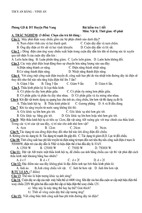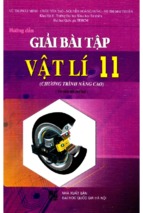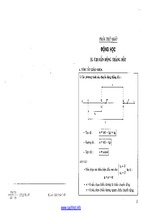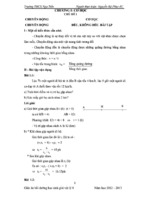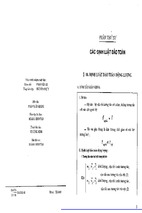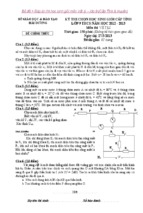Introductory Raman Spectroscopy
(Second edition)
Elsevier, 2003
Author: John R. Ferraro, Kazuo Nakamoto and Chris W. Brown
ISBN: 978-0-12-254105-6
Preface to the Second Edition, Page x
Acknowledgments, Page xi
Preface to the First Edition, Page xii
Acknowledgments, Page xiii
Chapter 1 - Basic Theory, Pages 1-94
Chapter 2 - Instrumentation and Experimental Techniques, Pages 95-146
Chapter 3 - Special Techniques, Pages 147-206
Chapter 4 - Materials Applications, Pages 207-266
Chapter 5 - Analytical Chemistry, Pages 267-293
Chapter 6 - Biochemical and Medical Applications, Pages 295-324
Chapter 7 - Industrial, Environmental and Other Applications, Pages 325-361
Appendix 1 - Point Groups and Their Character Tables, Pages 364-370
Appendix 2 - General Formulas for Calculating the Number of Normal
Vibrations in Each Symmetry Species, Pages 371-375
Appendix 3 - Direct Products of Irreducible Representations, Pages 376-377
Appendix 4 - Site Symmetries for the 230 Space Groups, Pages 378-383
Appendix 5 - Determination of the Proper Correlation Using Wyckoff's
Tables, Pages 384-389
Appendix 6 - Correlation Tables, Pages 390-401
Appendix 7 - Principle of Laser Action, Pages 402-405
Appendix 8 - Raman Spectra of Typical Solvents, Pages 406-421
Index, Pages 423-434
by kmno4
Preface to the Second Edition
The second edition of Introductory Raman Spectroscopy treats the subject
matter on an introductory level and serves as a guide for newcomers in the
field.
Since the first edition of the book, the expansion of Raman spectroscopy as
an analytical tool has continued. Thanks to advances in laser sources, detectors, and fiber optics, along with the capability to do imaging Raman spectroscopy, the continued versatility of FT-Raman, and dispersive based CCD
Raman spectrometers, progress in Raman spectroscopy has flourished. The
technique has moved out of the laboratory and into the workplace. In situ and
remote measurements of chemical processes in the plant are becoming routine, even in hazardous environments.
This second edition contains seven chapters. Chapter 1 remains a discussion of basic theory. Chapter 2 expands the discussion on Instrumentation
and Experimental Techniques. New discussions on FT-Raman and fiber
optics are included. Sampling techniques used to monitor processes in corrosive environments are discussed. Chapter 3 concerns itself with Special Techniques; discussions on 2D correlation Raman spectroscopy and Raman
imaging spectroscopy are provided. The new Chapter 4 deals with materials
applications in structural chemistry and in solid state. A new section on
polymorphs is presented and demonstrates the role of Raman spectroscopy
in differentiating between polymorphs, an important industrial problem,
particularly in the pharmaceutical field. The new Chapter 5 is based on
analytical applications and methods for processing Raman spectral data, a
subject that has generated considerable interest in the last ten years. The
discussion commences with a general introduction to chemometric processing
methods as they apply to Raman spectroscopy; it then proceeds to a discussion of some analytical applications of those methods. The new Chapter 6
presents applications in the field of biochemistry and in the medical field, a
very rich and fertile area for Raman spectroscopy. Chapter 7 presents industrial applications, including some new areas such as ore refinement, the
lumber/paper industry, natural gas analysis, the pharmaceutical/prescription
drug industry, and polymers. The second edition, like the first, contains eight
appendices.
With these inclusions, we beUeve that the book brings the subject of Raman
spectroscopy into the new millennium.
Preface to the Second Edition
xi
Acknowledgments
The authors would Hke to express their thanks to Prof. Robert A. Condrate
of Alfred University, Prof. Roman S. Czernuszewicz of the University of
Houston, Dr. Victor A. Maroni of Argonne National Laboratory, and Prof.
Masamichi Tsuboi of Iwaki-Meisei University of Japan who made many
valuable suggestions. Special thanks are given to Roman S. Czernuszewicz
for making drawings for Chapters 1 and 2. Our thanks and appreciation
also go to Prof. Hiro-o Hamaguchi of Kanagawa Academy of Science and
Technology of Japan and Prof. Akiko Hirakawa of the University of the Air
of Japan who gave us permission to reproduce Raman spectra of typical
solvents (Appendix 8). Professor Kazuo Nakamoto also extends thanks to
Professor Yukihiro Ozaki of Kwansei-Gakuin University in Japan and
to Professor Kasem Nithipatikom of the Medical College of Wisconsin for
help in writing sections 3.7 and 6.2.4 of the second edition respectively.
Professor Chris W. Brown would hke to thank Su-Chin Lo of Merck Pharmaceutical Co. for aid in sections dealing with pharmaceuticals and Scott
W. Huffman of the National Institute of Health for measuring Raman
spectra of peptides. All three authors thank Mrs. Carla Kinney, editor for
Academic Press, for her encouragement in the development of the second
edition.
2002
John R. Ferraro
Kazuo Nakamoto
Chris W. Brown
Preface to the First Edition
Raman spectroscopy has made remarkable progress in recent years. The
synergism that has taken place with the advent of new detectors, Fouriertransform Raman and fiber optics has stimulated renewed interest in the
technique. Its use in academia and especially in industry has grown rapidly.
A well-balanced Raman text on an introductory level, which explains basic
theory, instrumentation and experimental techniques (including special techniques), and a wide variety of applications (particularly the newer ones) is not
available. The authors have attempted to meet this deficiency by writing this
book. This book is intended to serve as a guide for beginners.
One problem we had in writing this book concerned itself in how one
defines "introductory level." We have made a sincere effort to write this
book on our definition of this level, and have kept mathematics at a minimum, albeit giving a logical development of basic theory.
The book consists of Chapters 1 to 4, and appendices. The first chapter
deals with basic theory of spectroscopy; the second chapter discusses instrumentation and experimental techniques; the third chapter deals with special
techniques; Chapter 4 presents applications of Raman spectroscopy in structural chemistry, biochemistry, biology and medicine, soHd-state chemistry
and industry. The appendices consist of eight sections. As much as possible,
the authors have attempted to include the latest developments.
Xll
Preface to the First Edition
xiii
Acknowledgments
The authors would Uke to express their thanks to Prof. Robert A. Condrate of
Alfred University, Prof. Roman S. Czernuszewicz of the University of
Houston, Dr. Victor A. Maroni of Argonne National Laboratory, and
Prof. Masamichi Tsuboi of Iwaki-Meisei University of Japan who made
many valuable suggestions. Special thanks are given to Roman S. Czernuszewicz for making drawings for Chapters 1 and 2. Our thanks and appreciation also go to Prof. Hiro-o Hamaguchi of Kanagawa Academy of Science
and Technology of Japan and Prof. Akiko Hirakawa of the University of the
Air of Japan who gave us permission to reproduce Raman spectra of typical
solvents (Appendix 8). We would also like to thank Ms. Jane EUis, Acquisition Editor for Academic Press, Inc., who invited us to write this book and for
her encouragement and help throughout the project. Finally, this book could
not have been written without the help of many colleagues who allowed us to
reproduce figures for publication.
1994
John R. Ferraro
Kazuo Nakamoto
Chapter 1
Basic Theory
1.1
Historical Background of Raman Spectroscopy
In 1928, when Sir Chandrasekhra Venkata Raman discovered the phenomenon that bears his name, only crude instrumentation was available. Sir
Raman used sunlight as the source and a telescope as the collector; the
detector was his eyes. That such a feeble phenomenon as the Raman scattering was detected was indeed remarkable.
Gradually, improvements in the various components of Raman instrumentation took place. Early research was concentrated on the development of
better excitation sources. Various lamps of elements were developed (e.g.,
helium, bismuth, lead, zinc) (1-3). These proved to be unsatisfactory because
of low hght intensities. Mercury sources were also developed. An early
mercury lamp which had been used for other purposes in 1914 by Kerschbaum (1) was developed. In the 1930s mercury lamps suitable for
Raman use were designed (2). Hibben (3) developed a mercury burner in
1939, and Spedding and Stamm (4) experimented with a cooled version in
1942. Further progress was made by Rank and McCartney (5) in 1948, who
studied mercury burners and their backgrounds. Hilger Co. developed a
commercial mercury excitation source system for the Raman instrument,
which consisted of four lamps surrounding the Raman tube. Welsh et al. (6)
introduced a mercury source in 1952, which became known as the Toronto
Arc. The lamp consisted of a four-turn helix of Pyrex tubing and was an
improvement over the Hilger lamp. Improvements in lamps were made by
Introductory Raman Spectroscopy, Second Edition
1
Copyright © 2003, 1994 Elsevier Science (USA)
All rights of reproduction in any form reserved.
ISBN 0-12-254105-7
2
Chapter 1. Basic Theory
Ham and Walsh (7), who described the use of microwave-powered hehum,
mercury, sodium, rubidium and potassium lamps. Stammreich (8-12) also
examined the practicaHty of using helium, argon, rubidium and cesium lamps
for colored materials. In 1962 laser sources were developed for use with
Raman spectroscopy (13). Eventually, the Ar^ (351.l-514.5nm) and the
Kr^ (337.4-676.4 nm) lasers became available, and more recently the NdYAG laser (1,064 nm) has been used for Raman spectroscopy (see Chapter 2,
Section 2.2).
Progress occurred in the detection systems for Raman measurements.
Whereas original measurements were made using photographic plates with
the cumbersome development of photographic plates, photoelectric Raman
instrumentation was developed after World War II. The first photoelectric
Raman instrument was reported in 1942 by Rank and Wiegand (14), who
used a cooled cascade type RCA IP21 detector. The Heigl instrument
appeared in 1950 and used a cooled RCA C-7073B photomultiplier. In 1953
Stamm and Salzman (15) reported the development of photoelectric Raman
instrumentation using a cooled RCA IP21 photomultiplier tube. The Hilger
E612 instrument (16) was also produced at this time, which could be used as a
photographic or photoelectric instrument. In the photoelectric mode a photomultiplier was used as the detector. This was followed by the introduction of
the Cary Model 81 Raman spectrometer (17). The source used was the 3 kW
helical Hg arc of the Toronto type. The instrument employed a twin-grating,
twin-slit double monochromator.
Developments in the optical train of Raman instrumentation took place in
the early 1960s. It was discovered that a double monochromator removed
stray light more efficiently than a single monochromator. Later, a triple
monochromator was introduced, which was even more efficient in removing
stray hght. Holographic gratings appeared in 1968 (17), which added to the
efficiency of the collection of Raman scattering in commercial Raman instruments.
These developments in Raman instrumentation brought commercial
Raman instruments to the present state of the art of Raman measurements.
Now, Raman spectra can also be obtained by Fourier transform (FT) spectroscopy. FT-Raman instruments are being sold by all Fourier transform
infrared (FT-IR) instrument makers, either as interfaced units to the FT-IR
spectrometer or as dedicated FT-Raman instruments.
1.2
Energy Units and Molecular Spectra
Figure 1-1 illustrates a wave of polarized electromagnetic radiation traveling
in the z-direction. It consists of the electric component (x-direction) and
magnetic component (y-direction), which are perpendicular to each other.
1.2 Energy Units and Molecular Spectra
Figure 1-1 Plane-polarized electromagnetic radiation.
Hereafter, we will consider only the former since topics discussed in this book
do not involve magnetic phenomena. The electric field strength (£) at a given
time (t) is expressed by
E = EQ cos 2nvt,
(1-1)
where EQ is the amplitude and v is the frequency of radiation as defined
later.
The distance between two points of the same phase in successive waves is
called the "wavelength," A, which is measured in units such as A (angstrom),
nm (nanometer), m/i (millimicron), and cm (centimeter). The relationships
between these units are:
1 A = 10"^ cm = 10"^ nm = 10"^m/i.
(1-2)
Thus, for example, 4,000 A = 400 nm = 400 m//.
The frequency, v, is the number of waves in the distance light travels in one
second. Thus,
V
(1-3)
=
r
where c is the velocity of light (3 x 10^^ cm/s). IfX is in the unit of centimeters,
its dimension is (cm/s)/(cm) = 1/s. This "reciprocal second" unit is also
called the "hertz" (Hz).
The third parameter, which is most common to vibrational spectroscopy, is
the "wavenumber," v, defined by
V
c
(1-4)
The difference between v and v is obvious. It has the dimension of
(l/s)/(cm/s) = 1/cm. By combining (1-3) and (1-4) we have
.
V
1
(cm-i).
(1-5)
Chapter 1. Basic Theory
Table 1-1 Units Used in Spectroscopy*
10^2
10^
10^
103
102
w
10-^
10-2
10-3
10-^
10-9
10-12
10-15
10-18
T
G
M
k
h
da
d
c
m
tera
giga
mega
kilo
hecto
deca
deci
centi
milli
micro
nano
pico
femto
atto
JH
n
P
f
a
*Notations: T, G, M, k, h, da, //, n—Greek;
d, c, m—Latin; p—Spanish; f—Swedish;
a—Danish.
Thus, 4,000 A corresponds to 25 x 10^ cm~^ since
A(cm)
4 X 10^ X 10-^
Table 1-1 lists units frequently used in spectroscopy. By combining (1-3) and
(1-4), we obtain
c
v = - = cv.
(1-6)
As shown earlier, the wavenumber (v) and frequency (v) are different parameters, yet these two terms are often used interchangeably. Thus, an expression such as "frequency shift of 30cm~^" is used conventionally by IR
and Raman spectroscopists and we will follow this convention through this
book.
If a molecule interacts with an electromagnetic field, a transfer of energy
from the field to the molecule can occur only when Bohr's frequency condition is satisfied. Namely,
AE = hv = h^ = hcv.
(1-7)
A
Here AE is the difference in energy between two quantized states, h is Planck's
constant (6.62 x 10~^^ erg s) and c is the velocity of Hght. Thus, v is directly
proportional to the energy of transition.
1.2 Energy Units and Molecular Spectra
5
Suppose that
AE = ^ 2 - ^ i ,
(1-8)
where E2 and E\ are the energies of the excited and ground states, respectively. Then, the molecule "absorbs" LE when it is excited from E\ to E2, and
"emits" ^E when it reverts from E2 to £"1*.
-£2
AE \ absorption
^
El
r-^-El
AE 1 emission
!
El
Using the relationship given by Eq. (1-7), Eq. (1-8) is written as
AE = E2-Ei^
hcv.
(1-9)
Since h and c are known constants, A^* can be expressed in terms of various
energy units. Thus, 1 cm~^ is equivalent to
AE - [6.62 X 10-2'^ (erg s)][3 x 10i^(cm/s)][l(l/cm)]
= 1.99 X 10"^^ (erg/molecule)
= 1.99 X 10"^^ (joule/molecule)
= 2.86 (cal/mole)
= 1.24 X 10-"^ (eV/molecule)
In the preceding conversions, the following factors were used:
1 (erg/molecule) = 2.39 x 10~^ (cal/molecule)
= 1 X 10~^ (joule/molecule)
= 6.2422 X 10^^ (eV/molecule)
Avogadro number, TV^ = 6.025 x 10^^ (1/mole)
1 (cal) = 4.184 (joule)
Figure 1-2 compares the order of energy expressed in terms of v (cm~0,/I
(cm) and v (Hz).
As indicated in Fig. 1-2 and Table 1-2, the magnitude of AE is different
depending upon the origin of the transition. In this book, we are mainly
concerned with vibrational transitions which are observed in infrared (IR) or
Raman spectra**. These transitions appear in the 10^ ~ 10^ cm~^ region and
*If a molecule loses A E via molecular collision, it is called a "radiationless transition."
**Pure rotational and rotational-vibrational transitions are also observed in IR and Raman
spectra. Many excellent textbooks are available on these and other subjects (see general references
given at the end of this chapter).
Chapter 1. Basic Theory
NMR
ESR
10-^
uv,
Raman,
Infrared
Microwave
102
10-
Y-ray
X-ray
Visible
104
10^
10«
10 10
V (cm"^)
1
10"
1
1
1
1
1
1
102
1
10-2
10-4
10-^
10-8
1
1
1
1
3x10^
3X10^
3x10^°
1
10-
A, (cm)
Figure 1-2
Table 1-2
1
3x10^2
3x10^"
v(Hz)
1
1
1
3X10^^
3x10^^
3X10^°
Energy units for various portions of electromagnetic spectrum.
Spectral Regions and Their Origins
Spectroscopy
y-ray
Range (v, cm ^)
IQiO- -10^
X-ray (ESCA, PES)
10^- -10^
UV-Visible
10^- -10^
Raman and infrared
10^- -102
Microwave
102- -1
Electron spin
resonance (ESR)
Nuclear magnetic
resonance (NMR)
1- -10-2
10-2- -10-4
Origin
Rearrangement of elementary particles
in the nucleus
Transitions between energy levels of inner
electrons of atoms and molecules
Transitions between energy levels of valence
electrons of atoms and molecules
Transitions between vibrational levels
(change of configuration)
Transitions between rotational levels
(change of orientation)
Transitions between electron spin levels in
magnetic field
Transitions between nuclear spin levels in
magnetic fields
originate from vibrations of nuclei constituting the molecule. As will be
shown later, Raman spectra are intimately related to electronic transitions.
Thus, it is important to know the relationship between electronic and vibrational states. On the other hand, vibrational spectra of small molecules in the
gaseous state exhibit rotational fine structures.* Thus, it is also important to
*In solution, rotational fine structures are not observed because molecular collisions (lO'^^s)
occur before one rotation is completed (10-^ ^s) and the levels of individual molecules are
perturbed differently. In the solid state, molecular rotation does not occur because of intermolecular interactions.
1.3 Vibration of a Diatomic Molecule
i
'0 = 0
Zero point energy
Electronic
excited state
Pure el ectronic
trani>ition
A
H
O
z
6
4
J = 0 ^^^^^^^^
6
-
=
4 2 =
J =0
|_ Pure rotational
transition
^
—
1
Pure vibrational
transition
1
-0 = 0
Electronic
ground state
Zero point energy
Figure 1-3 Energy levels of a diatomic molecule. (The actual spacings of electronic
levels are much larger, and those of rotational levels much smaller, than those shown in the figure.)
know the relationship between vibrational and rotational states. Figure 1-3
illustrates the three types of transitions for a diatomic molecule.
1.3
Vibration of a Diatomic Molecule
Consider the vibration of a diatomic molecule in which two atoms are
connected by a chemical bond.
Chapter 1. Basic Theory
W2
C.G.
r^
X2
xi
Here, m\ and m2 are the masses of atom 1 and 2, respectively, and r\ and r2 are
the distances from the center of gravity (C.G.) to the atoms designated. Thus,
r\ + ri is the equihbrium distance, and xi and X2 are the displacements of
atoms 1 and 2, respectively, from their equilibrium positions. Then, the
conservation of the center of gravity requires the relationships:
m\r\ = miTi,
(1-10)
m\{ri + xi) = miiri H- xi).
(1-11)
Combining these two equations, we obtain
x\ = \—\x2
or
X2=[ — \x\.
\mij
(1-12)
\m2j
In the classical treatment, the chemical bond is regarded as a spring that obeys
Hooke's law, where the restoring force,/, is expressed as
(1-13)
f=-K{xx^X2y
Here K is the force constant, and the minus sign indicates that the directions
of the force and the displacement are opposite to each other. From (1-12) and
(1-13), we obtain
m2
(1-14)
Newton's equation of motion ( / = ma; m = mass; a = acceleration) is written
for each atom as
(1-15)
d^X2
j^fmx-^m2\
(1-16)
By adding
(1-15) x{
we obtain
'"^ ]
mi + m2
and
(1-16) x ' '
'"'
tn\ +m2
1.3 Vibration of a Diatomic Molecule
m\m2
9
(dP-xx ,
Sx'i\
Introducing the reduced mass (/x) and the displacement {q), (1-17) is written as
. g = - ^ . .
(1-18)
The solution of this differential equation is
q^q^
sin {^n\^t -f (/?),
(1-19)
where ^0 is the maximum displacement and 99 is the phase constant, which
depends on the initial conditions, VQ is the classical vibrational frequency
given by
The potential energy (K) is defined by
dV =-fdq
= Kqdq.
Thus, it is given by
y=\^ci^
(1-21)
-i^^osin (27rvo^ + (/:?)
— ITP vlfiql sin^ {2nvo t -\-ip).
The kinetic energy (7) is
^
1
{dxiVl
(dxiV
1 /j^y
= 27r^VQ/i^QCOS^
{Invot + (p).
(1-22)
Thus, the total energy (^is
= 27r^v^/i^^ ==
constant
(1-23)
Figure 1-4 shows the plot of F a s a function of ^. This is a parabolic potential,
V = \Kq^, with £" = T at ^ = 0 and E = F at ^ = ±qo. Such a vibrator is
called a harmonic oscillator.
Chapter 1. Basic Theory
10
1
/
I
\
A
: Vy
T
- Qo
0
w
/
E
V
V
+ Qo
Figure 1-4 Potential energy diagram for a harmonic oscillator.
In quantum mechanics (18,19) the vibration of a diatomic molecule can be
treated as a motion of a single particle having mass fi whose potential energy
is expressed by (1-21). The Schrodinger equation for such a system is written
as
(1-24)
If (1-24) is solved with the condition that ij/ must be single-valued, finite and
continuous, the eigenvalues are
E^ = hvlv-\-
hcv{v + -].
(1-25)
1
K
-—W—.
2nc y //
(1-26)
with the frequency of vibration
1
[K
V = —~AI—
or
2n y ft
v =
Here, v is the vibrational quantum number, and it can have the values 0, 1,2,
3, — The corresponding eigenfunctions are
/
/
N1/4
(1-27)
V2^f!
where
a = 2nyJiiK/h — An^iiv/h
and
H^^^^/^)
is a Hermite polynomial of the vth degree. Thus, the eigenvalues and the
corresponding eigenfunctions are
u - 0,
v=l,
EQ= \hv,
Ei= Ihv,
ij/Q = (a/7r)^/'^^-^^'/2
il/^ = (a/7r)^/^2i/2^e-^^'/2^
(1-28)
1.3 Vibration of a Diatomic Molecule
11
One should note that the quantum-mechanical frequency (1-26) is exactly the
same as the classical frequency (1-20). However, several marked differences
must be noted between the two treatments. First, classically, E is zero when q
is zero. Quantum-mechanically, the lowest energy state {v = 0) has the energy
of ^/iv (zero point energy) (see Fig. 1-3) which results from Heisenberg's
uncertainty principle. Secondly, the energy of a such a vibrator can change
continuously in classical mechanics. In quantum mechanics, the energy can
change only in units of hv. Thirdly, the vibration is confined within the
parabola in classical mechanics since T becomes negative if \q\ > \qo\ (see
Fig. 1-4). In quantum mechanics, the probability of finding q outside the
parabola is not zero (tunnel effect) (Fig. 1-5).
In the case of a harmonic oscillator, the separation between the two
successive vibrational levels is always the same (hv). This is not the case of
an actual molecule whose potential is approximated by the Morse potential
function shown by the sohd curve in Fig. 1-6.
V =
De{\-e-^^y.
(1-29)
Here, De is the dissociation energy and j8 is a measure of the curvature at the
bottom of the potential well. If the Schrodinger equation is solved with this
potential, the eigenvalues are (18,19)
Ei^ = hccoe
^-^2)
" ^ ^ ^ ^ ^ n ^ + 2 ' "^
(1-30)
where a>e is the wavenumber corrected for anharmonicity, and Xe^e indicates
the magnitude of anharmonicity. Equation (1-30) shows that the energy levels
of the anharmonic oscillator are no longer equidistant, and the separation
decreases with increasing v as shown in Fig. 1-6. Thus far, anharmonicity
^3
^2
N'l
-0 = 0
Figure 1-5 Wave functions (left) and probability distributions (right) of the harmonic oscillator.
12
Chapter 1. Basic Theory
1
1
Continuum
h3
;
1
'.
'10
^ ^
1
1 9
I 8
z
/
> 7
lel
^
1
\5\
—V
r-
A
//
'/
\"\
\\
/
\i\
\\
1
De
V
A
D- U \
Do
/
jlT^o 1
'
''
/
1
.___
^__.
1
Intemuclear Distance
Figure 1-6 Potential energy curve for a diatomic molecule. Solid line indicates a Morse potential
that approximates the actual potential. Broken line is a parabolic potential for a harmonic
oscillator. De and Do are the theoretical and spectroscopic dissociation energies, respectively.
corrections have been made mostly on diatomic molecules (see Table 1-3),
because of the complexity of calculations for large molecules.
According to quantum mechanics, only those transitions involving
Au = ±1 are allowed for a harmonic oscillator. If the vibration is anharmonic, however, transitions involving Au = ±2, ± 3 , . . . (overtones) are
also weakly allowed by selection rules. Among many At) = ±1 transitions,
that of D = 0
- Xem thêm -

